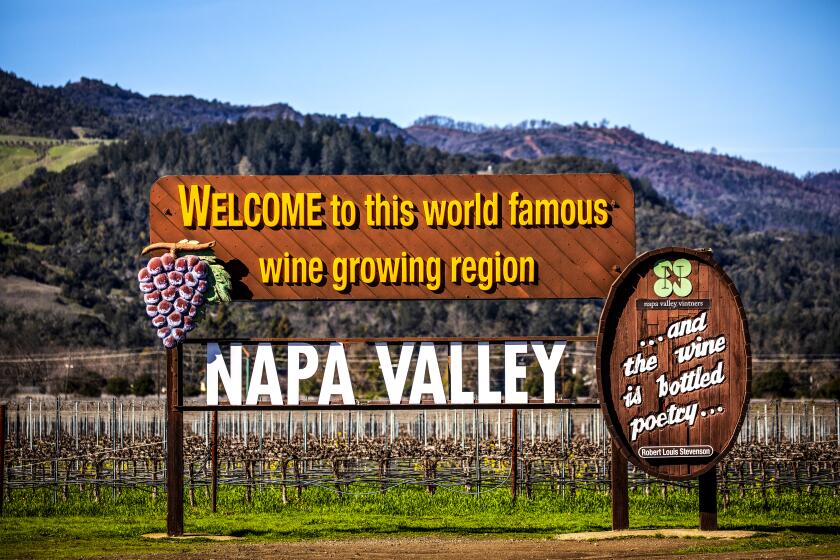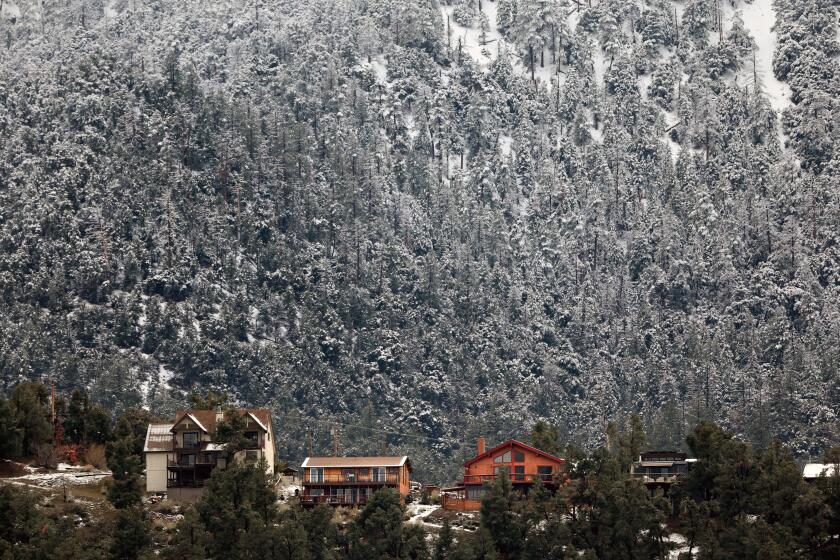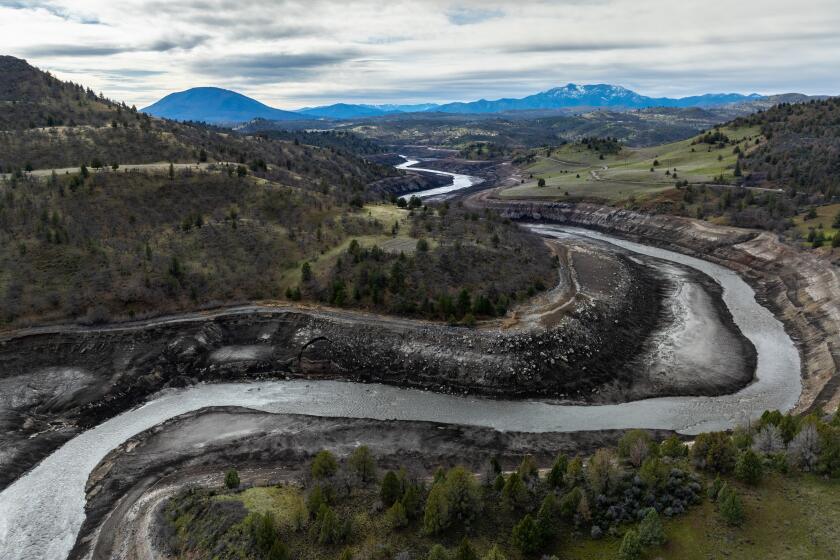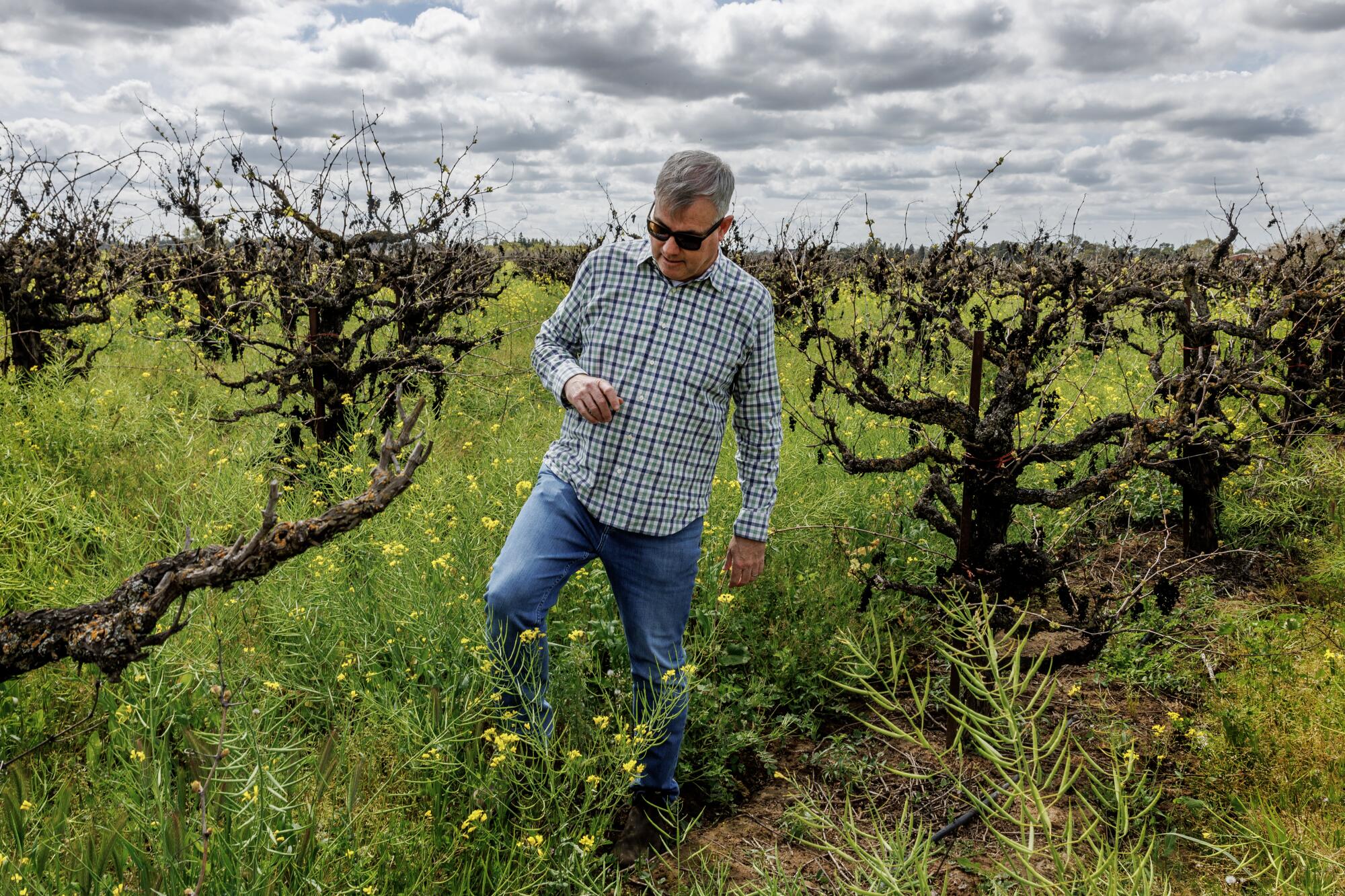
LODI, Calif. — Times are getting increasingly tough for many of California’s wine grape growers.
Wine-souring smoke from wildfires, grape-shriveling drought and global warming have all been playing an increasingly detrimental role in state vineyards for at least the last decade.
But those aren’t the only headaches. More recently, a tectonic shift in generational drinking habits has led to a global glut of wine.
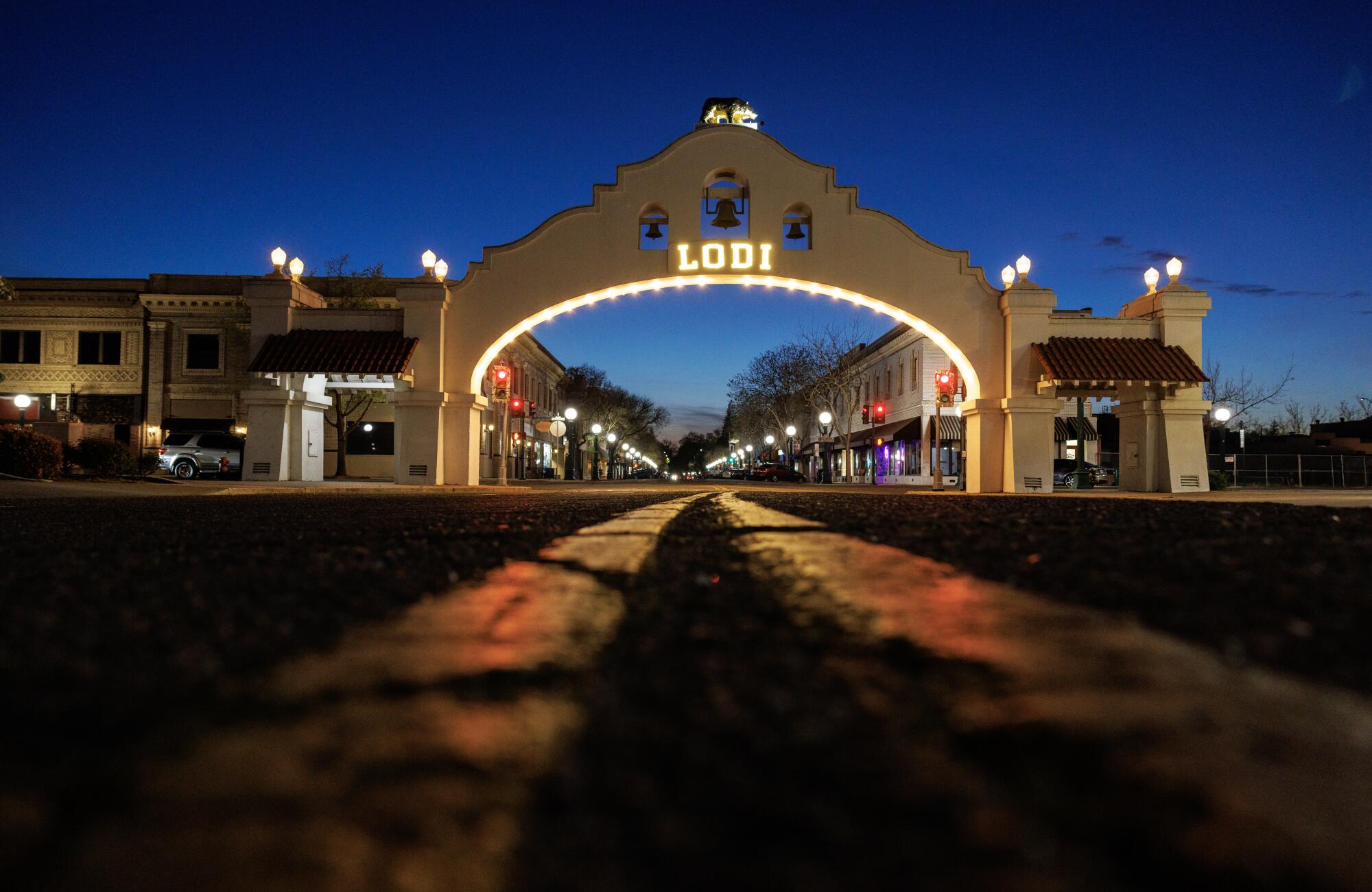
Now, struggling California growers have found themselves having to compete with bargain-basement wine prices from overseas growers eager to rid themselves of aging supplies.
“What’s aggravating is that we have grapes that didn’t get picked or sold while the biggest wineries in the state are bringing in cheap bulk wine from overseas,” lamented Lodi Winegrape Commissioner Stuart Spencer.
Among the Napa Valley luminaries whose county records have been subpoenaed in a secretive federal probe are the owners of Hall Wines, Caymus Vineyards, Alpha Omega, The Prisoner — and the list goes on.
Here in the heart of San Joaquin County’s prized wine country, thousands of tons of unpicked grapes cling to abandoned vines, and piles of gnarled wood and wire mark vast, uprooted vineyards.
Much of the reason for this, according to Spencer, is that giant California-based wineries have been increasing their purchases of cheap foreign bulk wine, then blending it with vintages produced on either side of Highway 99, about 35 miles south of Sacramento.
Under Federal Tax & Trade Bureau regulations, the resulting blend can be labeled “American wine” if it contains no more than 25% foreign wine.
While the blending of foreign wine with California wine is nothing new, few growers have wanted to complain publicly for fear of losing business from large winemakers. Now however, as the plight of vineyard owners grows, Spencer and others are speaking openly about it.
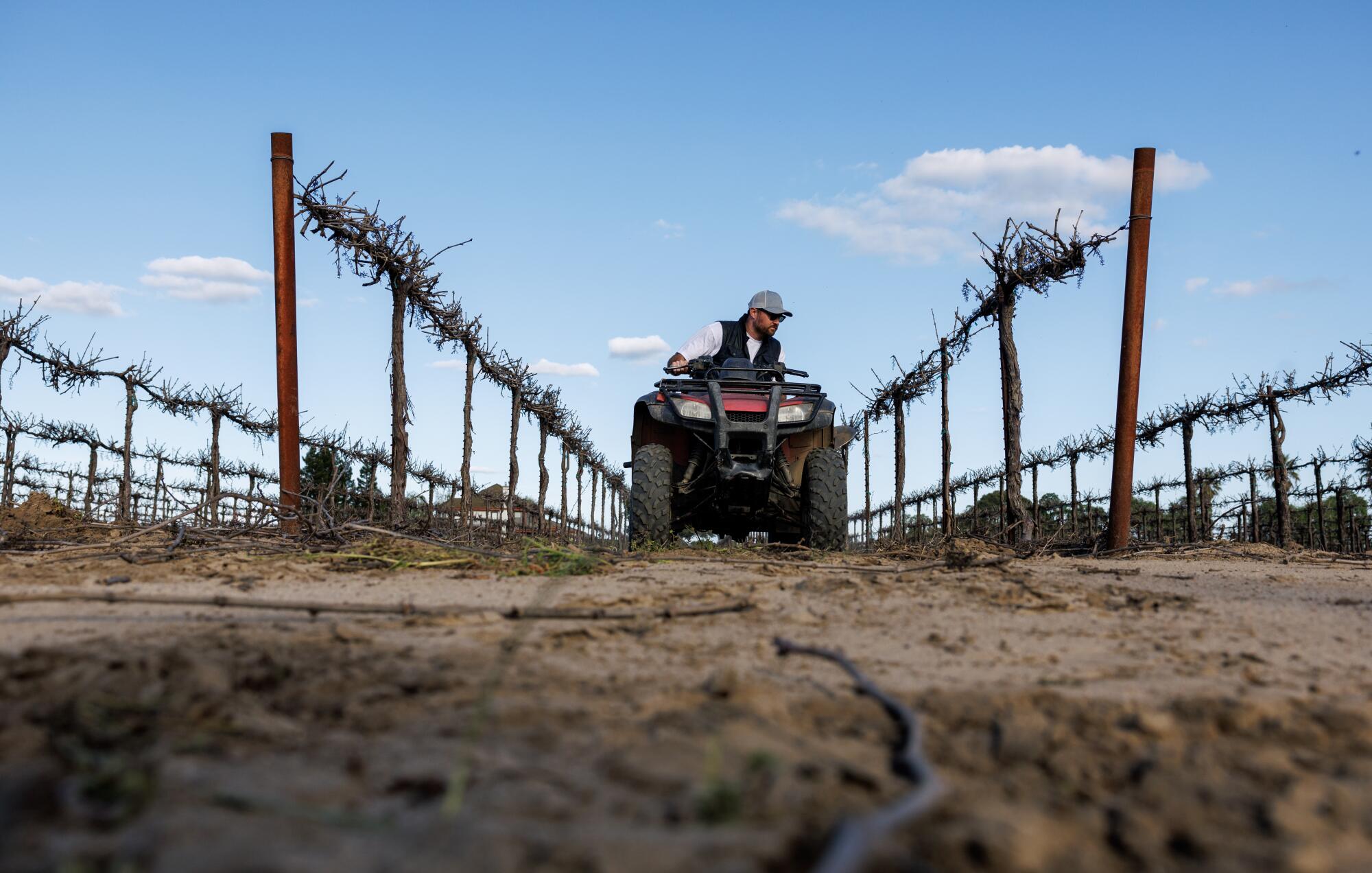
In March, Spencer shocked the industry by publishing a report entitled, “Imported foreign bulk wine: the dirty secret no one in California wine is talking about.”
“I felt I had to say something about a disturbing aspect of our industry that has been left out of the conversation,” Spencer said.
Aggressive and impactful reporting on climate change, the environment, health and science.
It is a searing criticism of the industry that has made Spencer, 54, something of a local hero at a time when many wine grape growers are grappling with the impacts of massive wildfires, unprecedented drought, rising labor and equipment costs, COVID-19 mandates and a brutal demographic disconnect around the world that has slowed the market for Cabernet Sauvignon, Chardonnay, Sauvignon Blanc, Zinfandel and Merlot.
Wine, once the height of boomer culture and conspicuous consumption, has lost its cool among young, more frugal and health-conscious potential customers, many of whom prefer cannabis over Cabernet, experts say. In France, the government is spending more than $200 million to destroy excess wine amid plummeting demand. In Australia, vineyards have been forced to stockpile two years’ worth of production due to lack of buyers.
Now, growers in Lodi — the most diverse wine growing region in the U.S., with 125 varieties in production — and across much of the state are being urged by industry representatives to remove tens of thousands of acres of vineyards to balance supply with demand.
Compounding all the other anxieties is the increasing importation of cheap bulk wine from Australia, New Zealand, Chile, Argentina and Canada by wineries including E&J Gallo, Constellation Brands, and Delicato Family Wines, according to Spencer.
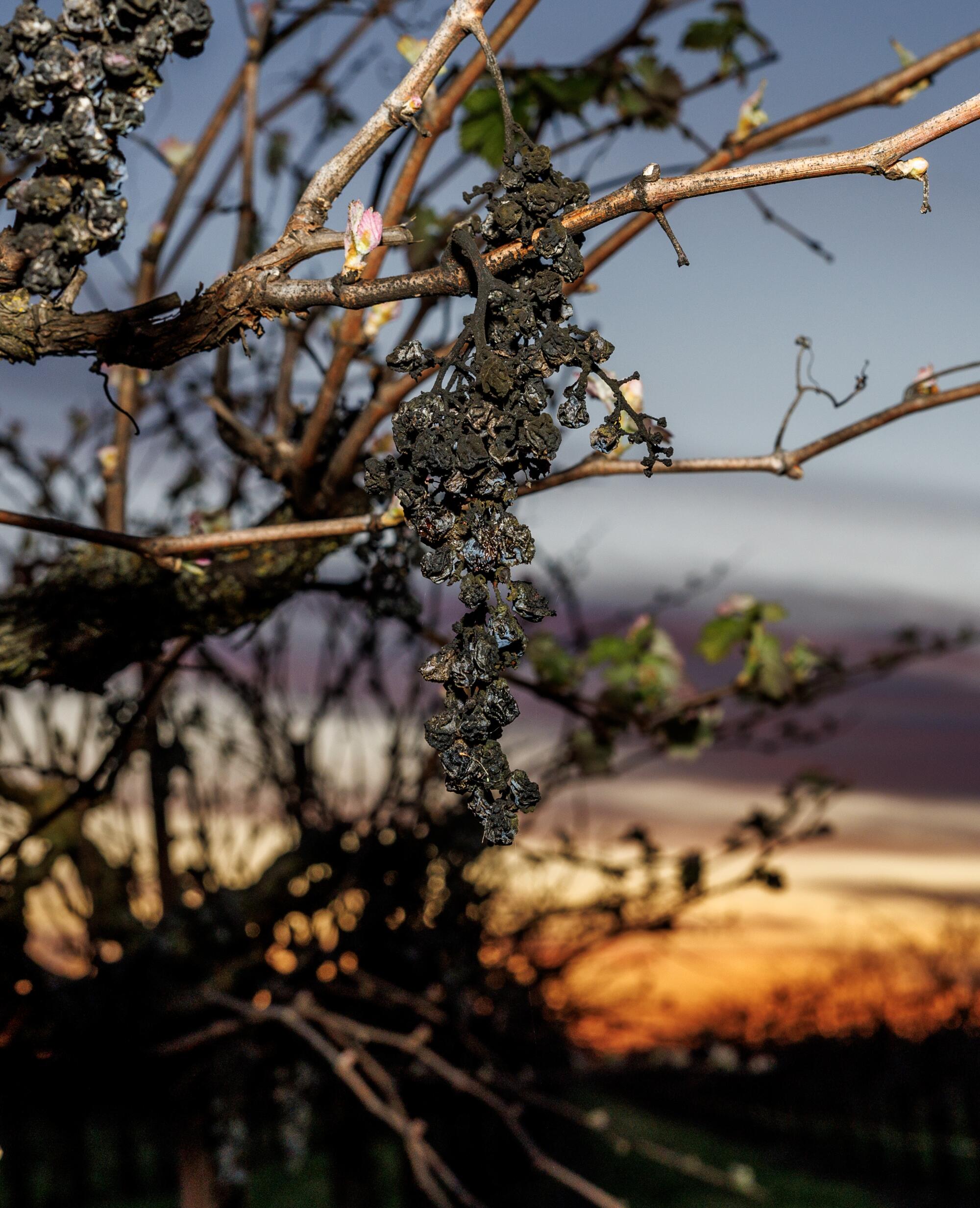
This spring, as green shoots are emerging from the vines, the 700 grape growers represented by Spencer’s commission have come to the uneasy realization that they have lost control of their fate due to global market forces and the increasingly harmful effects of global warming.
“We’ve been told that potentially 400,000 tons of grapes were left on the vine last harvest,” Spencer wrote in his report. “Growers have been told they need to remove thousands of vineyard acres to balance supply with demand.”
“But no one is mentioning that California’s largest grape buyers also imported the equivalent of 400,000 tons of grapes in 2022,” Spencer wrote. “This situation is exacerbated by a global oversupply of wine which allows wineries to source incredibly cheap foreign bulk wine to reduce their costs of goods sold.”
At Pine Mountain Club in Kern County, home and vehicle break-ins by bears are a recurring source of stress, as well as community division.
After reading Spencer’s report, some local growers said they stood up from their kitchen tables and cheered. Others worried about what the consequences could be.
“He’s saying things that could get us blacklisted,” said Garret Schaefer, whose family has been growing grapes here since the late 1800s. “And we can’t afford to get blacklisted because we have too much wine to sell.”
The report points out that “the importation of foreign bulk wine began in the late 1990s when a rapidly growing wine market looked overseas to fill demand.”
The trend slowed significantly in the early 2000s as California vineyard plantings exceeded demand, according to Spencer. However, it began to pick back up around 2006 and has grown steadily ever since.
Natalie Collins, director of the California Assn. of Grape Growers, an advocacy group, said, “Importing foreign bulk wine isn’t new.”
“What’s aggravating is that we have grapes that didn’t get picked or sold while the biggest wineries in the state are bringing in cheap bulk wine from overseas.”
— Lodi Winegrape Commissioner Stuart Spencer
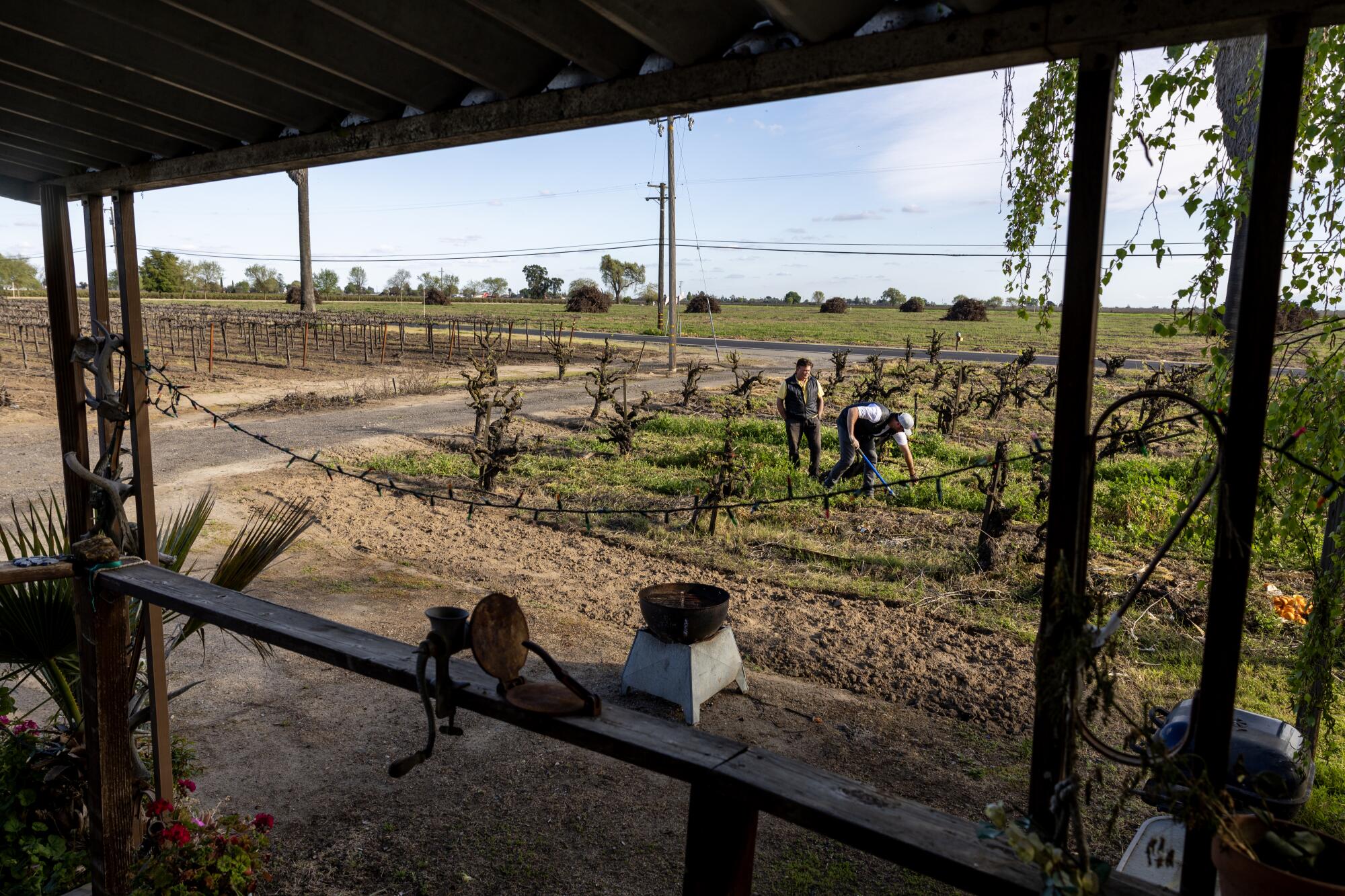
“But Stuart has done a great job of calling widespread attention to a worsening local dilemma: How can we compete when the big wineries can buy bulk wine from Canada, for example, for as low as a buck a gallon?”
None of the wineries targeted in Spencer’s report responded to inquiries from The Times.
The big question now is whether the report will blossom into something lasting and beneficial at a time when each week it seems more growers have decided to pull out vines, put land up for sale, or risk a fresh start with an alternative crop such as almonds, walnuts or pistachios.
Removing vineyards has become an expensive proposition. Under new San Joaquin Valley Air Pollution Control District Regulations, growers with more than 100 to 250 acres can no longer burn their uprooted vineyards.
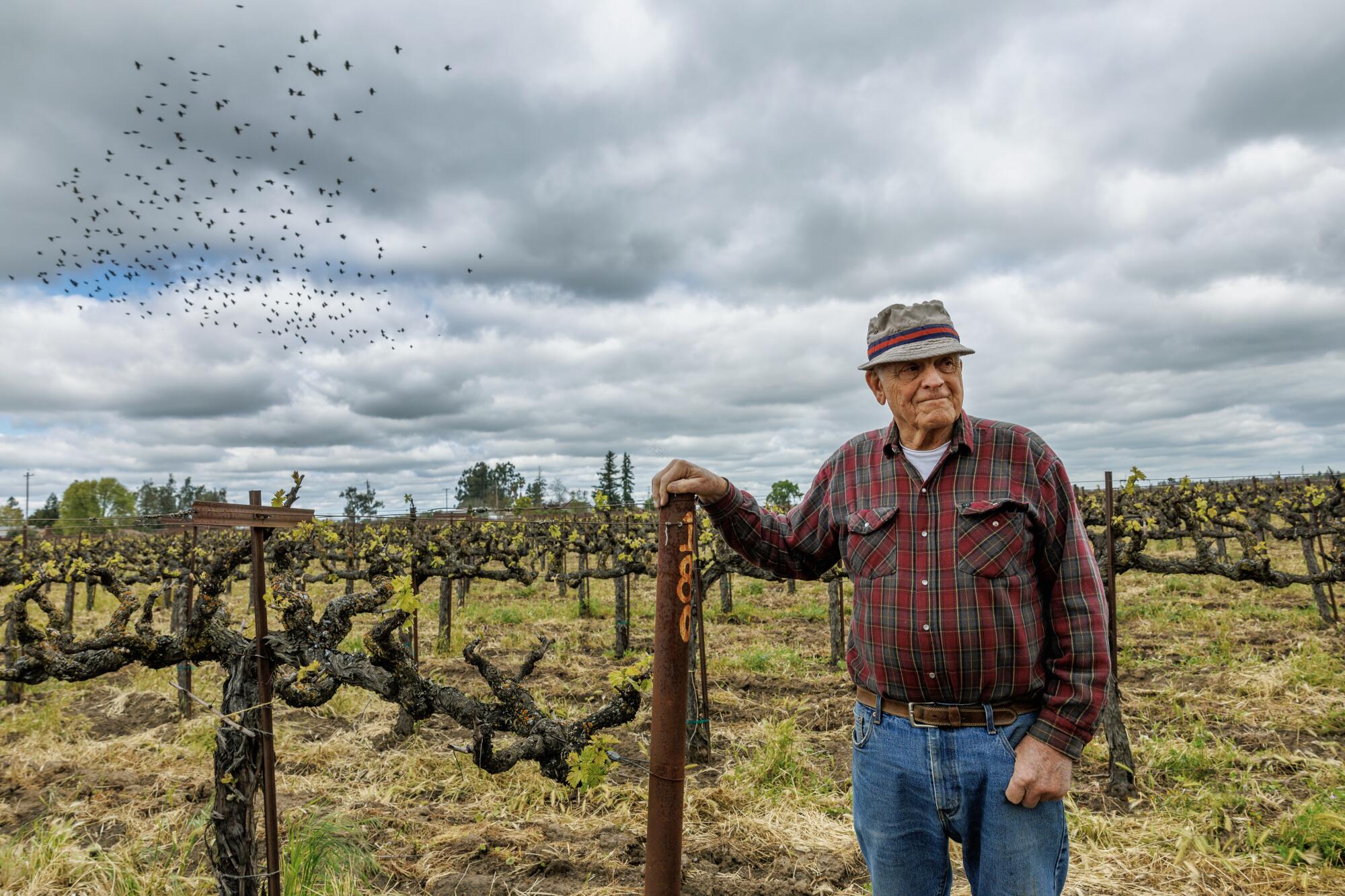
Now, they must hire crews to first extract wires embedded in their vines, then use contractors with heavy machinery to pile them up. The waste is later dumped into a crop grinder or an air curtain burner — an insulated box equipped with a diesel-powered fan that produces less smoke and particulate matter than traditional open burning.
Not removing an untended vineyard in a timely fashion renders it vulnerable to pests and disease that can leapfrog onto vines owned by nearby farmers.
As a result, emergency requests for vineyard removals have exceeded the capacity of heavy equipment operators to complete them.
“I have so many incoming work orders I’ll never get them done,” said Donald Wortley, 80, a general contractor who has removed vines for growers in Lodi for 50 years.
Reservoirs have been drained as the nation’s largest dam removal effort advances on the Klamath River, and an effort to restore the watershed is taking root.
“The situation in Lodi wine country is tragic — almost every grape grower in the region is in trouble,” he said. “Every vineyard you see that was not harvested means that the owner worked that year for nothing.”
“I fear we will soon start seeing bankruptcies,” he added.
Spencer claimed that every retailer and grocery he visited in the past few months had their shelves stocked with foreign-sourced bulk imports.
“And all the while many retailers proudly proclaim their support for our local farms,” Spencer said. “In no world does it make sense to ship bulk wine from across the globe to sit on a shelf in Lodi while thousands of tons of California wine grapes go unharvested and local growers remove family vineyards and take out loans to pay their farming bills.”
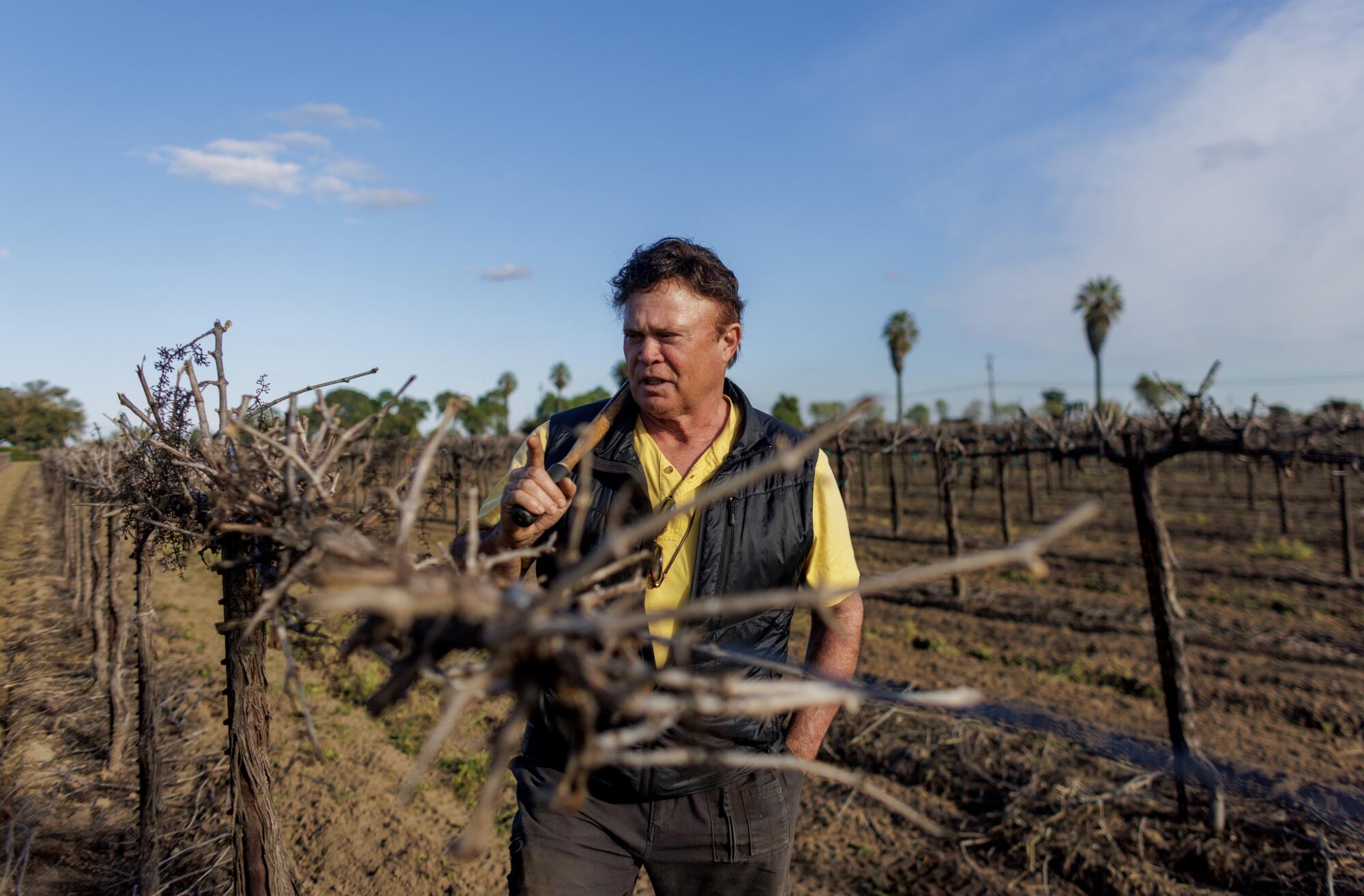
Greg Lauchland, 30, whose family has been growing wine grapes in the Lodi region for 104 years, described the situation as “a slap in the face.”
“It was a tough decision to make for longtime wine grape growers like us, but we planted 130 acres with almonds in October,” he said.
In March, Sacramento-based Blue Diamond Growers, a cooperative of almond growers, eliminated 38 corporate jobs as part of an effort to remain cost efficient amid challenges including an oversupply of almonds and shifts in consumer shopping patterns.
Under the circumstances, Lauchland’s father, Robert, 62, suggested, “It would seem to be in the best interests of the big wineries to promote California wine — and instead of calling that other stuff ‘American wine,’ how about calling it ‘International wine.’ ”
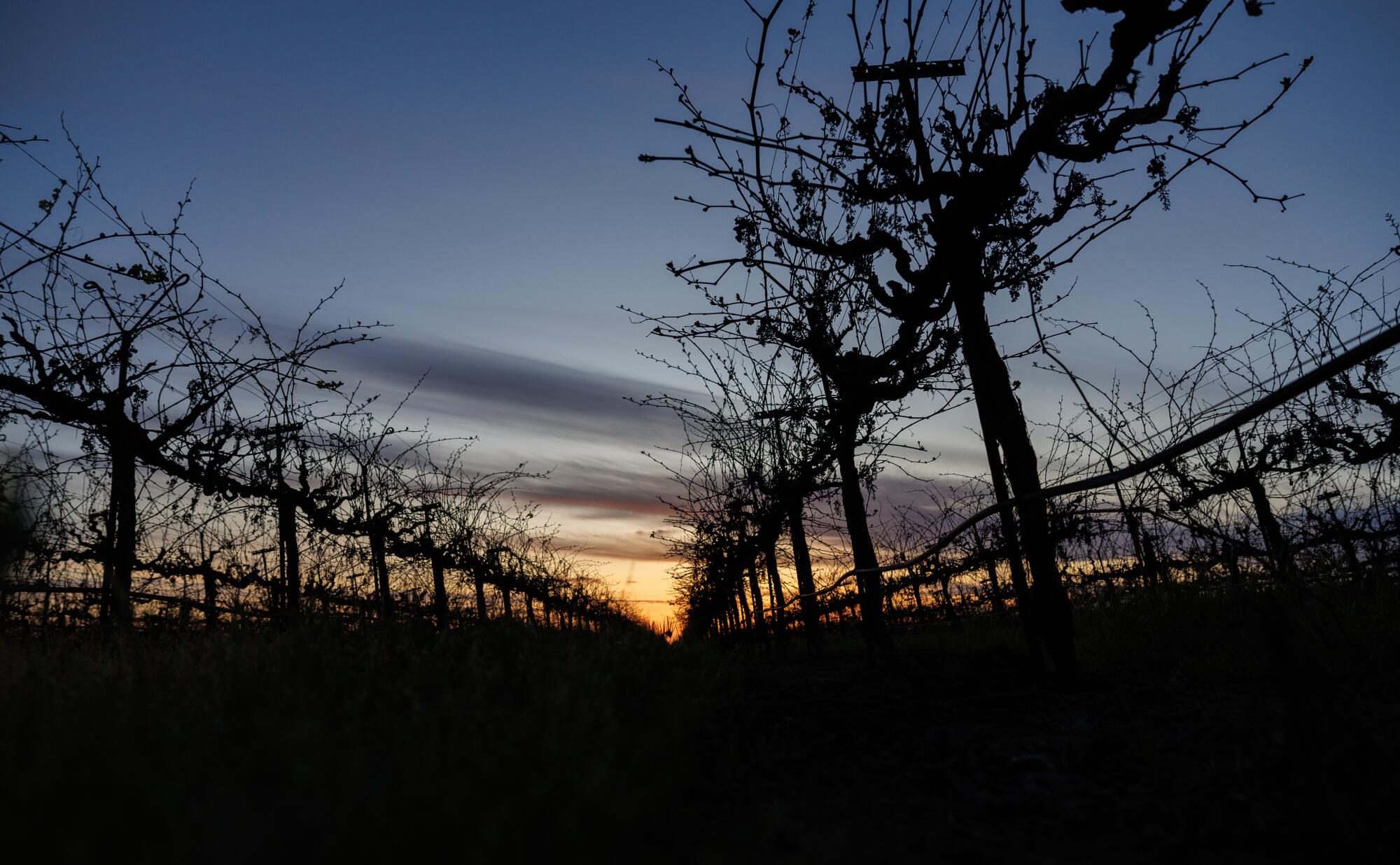
Spencer could not agree more. “Look closely at the labels of the wine that you’re buying,” he said, “and make sure your purchase supports California-grown grapes.”
Toward a more sustainable California
Get Boiling Point, our newsletter exploring climate change, energy and the environment, and become part of the conversation — and the solution.
You may occasionally receive promotional content from the Los Angeles Times.
